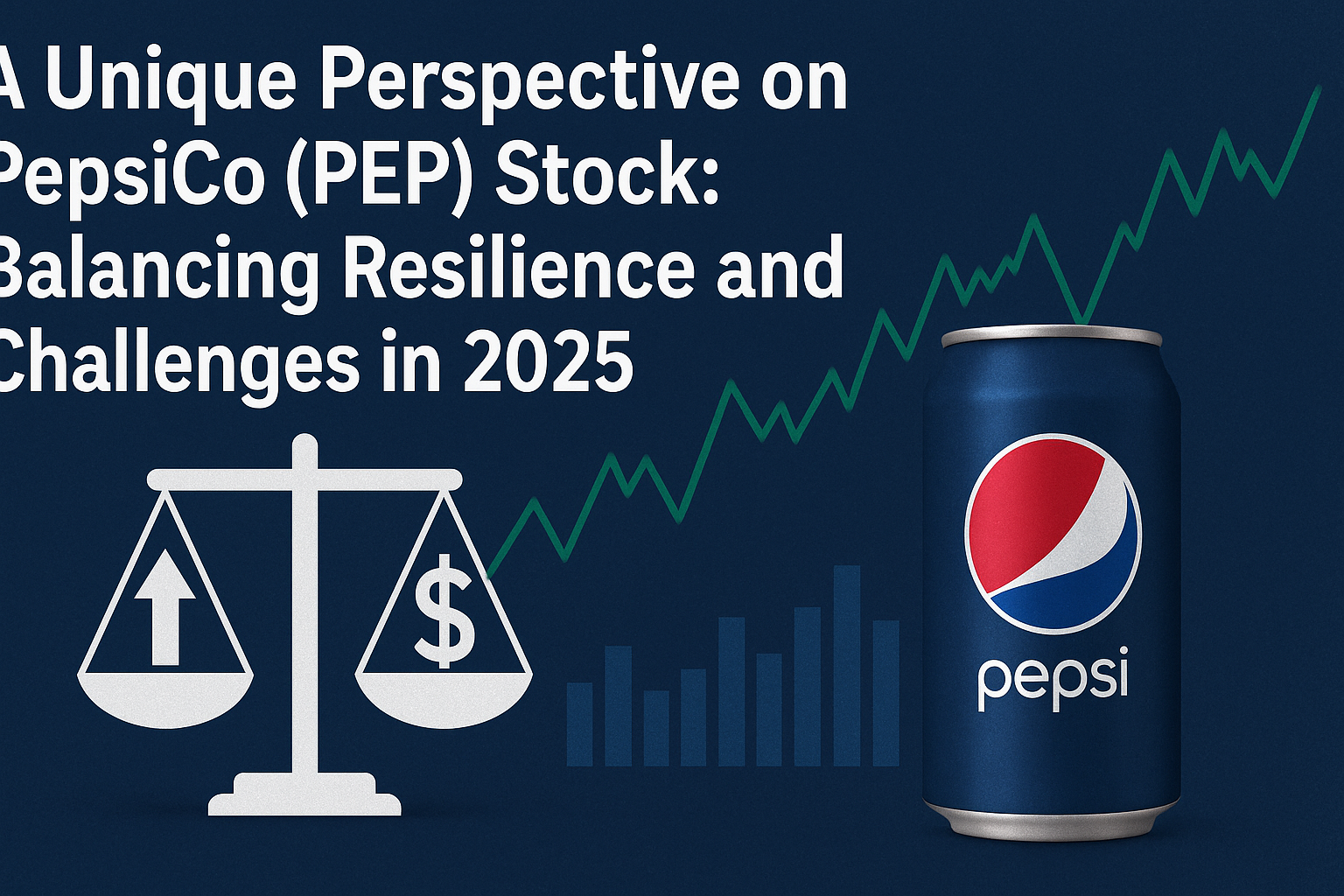PepsiCo, Inc. (NASDAQ: PEP), a global leader in the food and beverage industry, has long been a staple in consumer portfolios due to its diversified portfolio and consistent dividend payouts.
As of July 17, 2025, the company’s stock presents a complex but intriguing investment case, shaped by its operational strengths, market challenges, and strategic initiatives.
This article offers a unique analysis of PepsiCo’s stock, exploring its recent performance, competitive positioning, and potential for long-term investors, while weaving in lesser-discussed aspects like its international growth and productivity initiatives.
Company Overview and Market Position
PepsiCo operates across seven segments: Frito-Lay North America, Quaker Foods North America, PepsiCo Beverages North America, Latin America, Europe, Africa, Middle East and South Asia, and Asia Pacific, Australia, New Zealand, and China.
Its portfolio spans iconic brands like Pepsi, Gatorade, Lay’s, Doritos, Quaker, and Tropicana, covering snacks, beverages, and nutrition products.
With a market capitalization of approximately $183.46 billion and operations in over 200 countries, PepsiCo is a dominant player in the global savory snacks market and the second-largest beverage provider behind Coca-Cola.
The company’s diversified revenue streams—55% from convenience foods and 45% from beverages—provide a buffer against market volatility.
International markets contribute 40% of both sales and operating profits, highlighting PepsiCo’s global reach and ability to tap into emerging markets like Latin America and Asia-Pacific, which are experiencing secular growth.
Recent Stock Performance and Financials
As of July 17, 2025, PepsiCo’s stock price stands at $135.35, reflecting a 1.30% daily decline but a modest 0.30% weekly gain.
Over the past year, however, the stock has declined by 17.17%, underperforming the S&P 500, which remained flat. The stock hit a 52-week low recently, trading at a forward P/E ratio of 15.6, which some analysts argue is undervalued compared to historical multiples.
PepsiCo’s Q2 2025 earnings, reported on July 17, 2025, showed an EPS of $2.12, beating estimates of $2.03, and revenues of $22.73 billion, surpassing expectations of $22.24 billion.
The company raised its EPS outlook, boosting shares by 2.2% post-earnings. However, sales volumes have been flat or declining, with a 2.4% average quarterly volume drop over the past two years, signaling demand headwinds, particularly in North America.
The company’s 4.46% dividend yield and 76.68% payout ratio in 2024 make it attractive for income-focused investors. With a free cash flow (FCF) yield of 3.9% and a history of consistent dividend growth, PepsiCo remains a reliable dividend stock, though its high payout ratio raises questions about reinvestment flexibility.

Strategic Initiatives and Growth Opportunities
PepsiCo’s management is addressing challenges through a multi-year productivity plan aimed at countering inflation, supply chain disruptions, and tariff-related cost pressures.
The company is investing heavily in automation across manufacturing, warehousing, and distribution to enhance operational efficiency. These efforts, combined with data-driven logistics optimization, are designed to improve margins and fund innovation.
Internationally, PepsiCo has maintained momentum, with its international segment achieving 5% year-over-year organic revenue growth for 16 consecutive quarters. Emerging markets, particularly in Latin America and Asia-Pacific, benefit from rising snack consumption and demographic shifts.
Recent acquisitions, such as Siete Foods, bolster PepsiCo’s health-focused offerings, including grain-free tortillas and Muscle Milk, aligning with consumer trends toward healthier snacks.
A unique aspect of PepsiCo’s strategy is its use of nostalgia and regional marketing, as seen in its 7Up campaign in the Canary Islands.
By featuring local icons like Mount Teide and the Maspalomas Dunes on cans, PepsiCo taps into emotional connections to drive sales, a tactic that could be replicated in other markets to boost brand loyalty.
Challenges and Risks
Despite its strengths, PepsiCo faces significant headwinds. Health-conscious consumer trends are reducing demand for sugary sodas, impacting North American beverage sales.
Inflation and supply chain costs continue to pressure margins, and potential tariffs under new U.S. policies could exacerbate these issues. Wall Street analysts have revised core EPS guidance downward, projecting a 3% decline due to these uncertainties.
The stock’s technicals also suggest caution. With a beta of 0.06, PepsiCo is less volatile than the market, but its relative volume (RVOL) of 0.15 indicates muted trading interest, limiting short-term upside potential.
Some analysts see a “slow bleed” scenario with a 45% probability, driven by market rotation away from defensive stocks like PepsiCo toward growth-oriented sectors.
Historical Context: The Number Fever Debacle
A lesser-known but critical event in PepsiCo’s history is the 1992 “Number Fever” contest in the Philippines, which offers a cautionary tale about operational risks.
A computer glitch led to 800,000 bottle caps being printed with the winning number, potentially costing PepsiCo $32 billion. The fallout, including riots and legal battles, underscored the importance of robust systems and risk management—lessons that resonate as PepsiCo invests in automation today.
Investment Outlook
Analysts are mixed on PepsiCo’s prospects. While some, like UBS, maintain a Buy rating, others, including Barclays and JPMorgan, have lowered price targets to $132-$145, citing demand and cost pressures. The consensus price range ($110-$169) suggests potential upside of 27% but also significant downside risk.
For long-term investors, PepsiCo’s global diversification, strong brand portfolio, and productivity initiatives make it a compelling buy at current valuations, particularly for those seeking stable dividends. However, short-term traders should be cautious due to technical weaknesses and market sentiment favoring growth stocks.
Conclusion
PepsiCo’s stock in 2025 reflects a balance of resilience and challenges. Its diversified portfolio, international growth, and productivity efforts position it for long-term success, while near-term headwinds like declining soda demand and cost pressures warrant caution.
By leveraging nostalgia-driven marketing and health-focused innovation, PepsiCo can navigate these challenges, making it a stock worth considering for patient investors.
